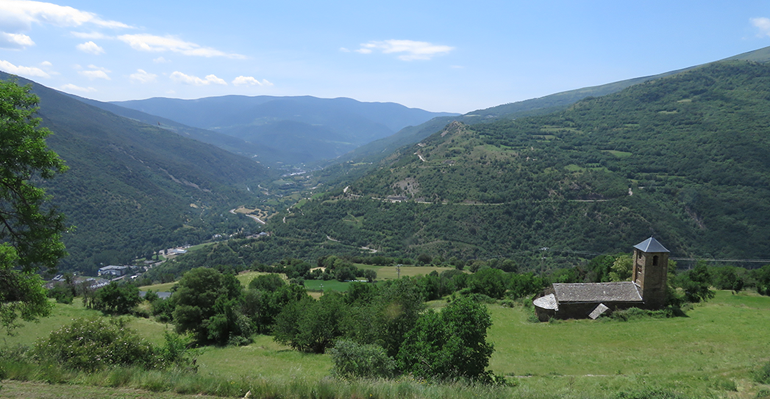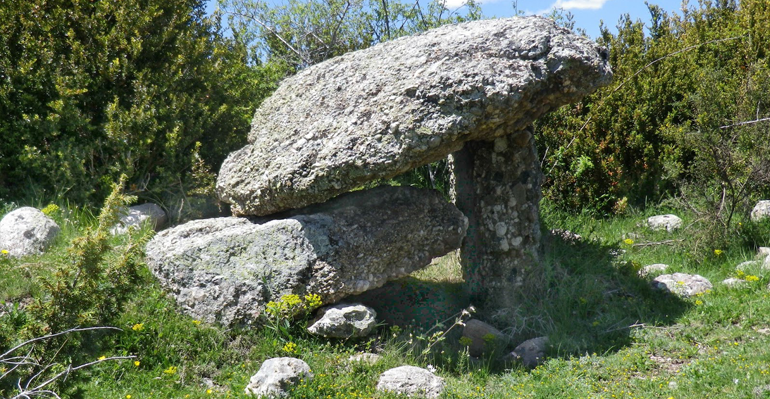
Surp: The Expression of Pallar's Gastronomy
Introduction:
This is a low-difficulty route where you can learn and enjoy at a leisurely pace the different elements that are part of the essence of Pallar’s gastronomy.
A walk that combines spaces in the wild and cultivated countryside, all within the municipality of Surp. We will pay attention to very diverse details that explain how rural life, especially in ancient times, had a very direct relationship with local cuisine, and the food independence that continues to this day.
We will find very diverse heritage elements, ranging from traditional dwellings designed to house draft or livestock, the presence of active dovecotes as a supplementary source of animal protein, and the Pallar’s images of shepherd's staffs made of hazelnut for managing the area's specific breeds of livestock and their transhumance throughout the seasons.
We will also see the use of wild plants that have been used as edible ingredients, or traditional—and modern—orchards with local varieties of fruits and vegetables.
To finish, we will be able to enjoy a tasting of some local products such as a selection of cheeses or take part in a cooking workshop with a prestigious chef.
What you'll discover:
Edible Wild Plants:
Wild spaces around Surp with aromatic plants used in traditional Pallars cuisine and herbal liqueurs.
Local Orchards:
Small agricultural areas with local fruit and vegetable varieties adapted to mountain conditions, including the prized Cardós pear.
Dovecotes:
Traditional pigeon-raising spaces under house roofs, a lost tradition that provided affordable animal protein for mountain communities.
Why this trail matters:
This trail helps travelers to:
- Understand the relationship between the traditional architecture of the area and its relationship with the production of food goods and well-being in homes.
- Understand how to meet basic needs - food security - in relation to seasonality, climate and orography for example through transhumance, wild plant uses, culture of local plants varieties or growing cattle.
- Recover the historical memory - intangible heritage - of the popular culture of mountain life and its popular knowledge. This includes different aspects related to transforming cattle, herbs, vegetables, and fruits into gastronomic expressions. These include traditional recipes such as Girella, live animal meat made with lamb's tail, Tupí cheese, and winter trinxat, as well as traditional cooking and food preservation techniques.
- Understand the complexity of the relationships between nature and culture, which include very diverse aspects that are linked to gastronomy: architecture, methods of cultivation and animal production, beliefs and ancestral knowledges, etc.
- Create a link between tradition and the present: in new ways of cooking, producing products and preserving them.
Heritage Trail Map:
Heritage Trail Details:
- Length (km):
- 1,5 km
- Level of difficulty:
- Low – 150 m slope
- Duration:
- 3-4 hours
- Getting there:
- Public transportation to Sort
- Taxi, private transportation, or walking by indicated trails to Surp
- Clothing:
- Comfortable hiking shoes and weather-appropriate clothing for outdoor exploration
- Tools needed:
- Camera for capturing tile discoveries
- Map or GPS for navigating
- Botanical field guide
- Material for foraging
- Safety guidelines:
- Sloping and unstable terrain
- Not recommendable in winter
- Guiding:
- Guided tour (optional)
- Self-guided (on your own)
- Contacts for more details:
- Naturalwalks
www.naturalwalks.com
+34 662 251 059
info@naturalwalks.com - Ajuntament de Sort
Phone: 973 62 00 10
E-mail: ajuntament@sort.cat - Consell Comarcal del Pallars Sobirà Tourist office
www.turisme.pallarssobira.cat
Camí de la Cabanera, 2, 25560, Sort
+34 973 62 10 02 - Lo Paller del Coc. Gastronomic space and residence
c/ Castell, s/n, 25594 Surp, Lleida
+34 607 66 33 51
info@lopallerdelcoc.com - Casa Mateu. Cheese producer
Casa Mateu, s/n, 25594, Rialp
+34 973 62 14 05
casamateu@formatgeriacasamateu.com - Cesc Capdevila Nature Guide
+34 627706247
info@cesccapdevila.com
- Naturalwalks
Quests / Chances to be creative:
Quest 1: 'Surp: The Expression of Pallar's Gastronomy'
Mission Overview
Enjoy and experience through a walk life in a small mountain town in the Pyrenees of Catalonia and its life from the perspective of gastronomy and the different elements of the territory, both traditional and more contemporary. Many of them are related to the natural resources of the immediate environment.
Success Criteria
Live first-hand the experience of identifying different natural and cultural elements of the local territory and seeing their connection with the daily life of its inhabitants in relation to cuisine.
Participant’s Role
You will become active traveler through the identification of plants or wild animals that have been a way of sustaining local communities over time.
You will:
- Be able to identify products grown or raised in the immediate environment and relate them to local cuisine: dishes or liquors, traditional or contemporary foods.
- Experience first-hand the preparation of dishes related to the territory through a culinary experience at Lo Paller del Coc or by tasting local products and cheese at Casa Mateu, a Cheese producer.
- Have direct contact with different local inhabitants, both original and new, who will give them a complete picture of the place and the relationship of the territory with different perspectives on cuisine.
- Relate traditional constructions (architecture) to elements related to cooking: pigeon breeding areas, vegetable gardens, spaces for livestock in houses, etc.
Quest Questions
To successfully complete the quest, you must answer these questions:
- What plants can you identify that are useful or used in cuisine in the Pallars region and Surp municipality specifically?
- What ingredients from garden, game or farmed animals can you identify in the local cuisine, traditional dishes and products?
- What relationship does traditional architecture have with the production of food products?
Final thoughts
It is important to convey the idea of the difficulties of life for people in isolated mountain places until the end of the last century and the amount of knowledge that local people developed to survive in extreme conditions, given the lack of good transport routes, storage or production of food products, among many other elements.

